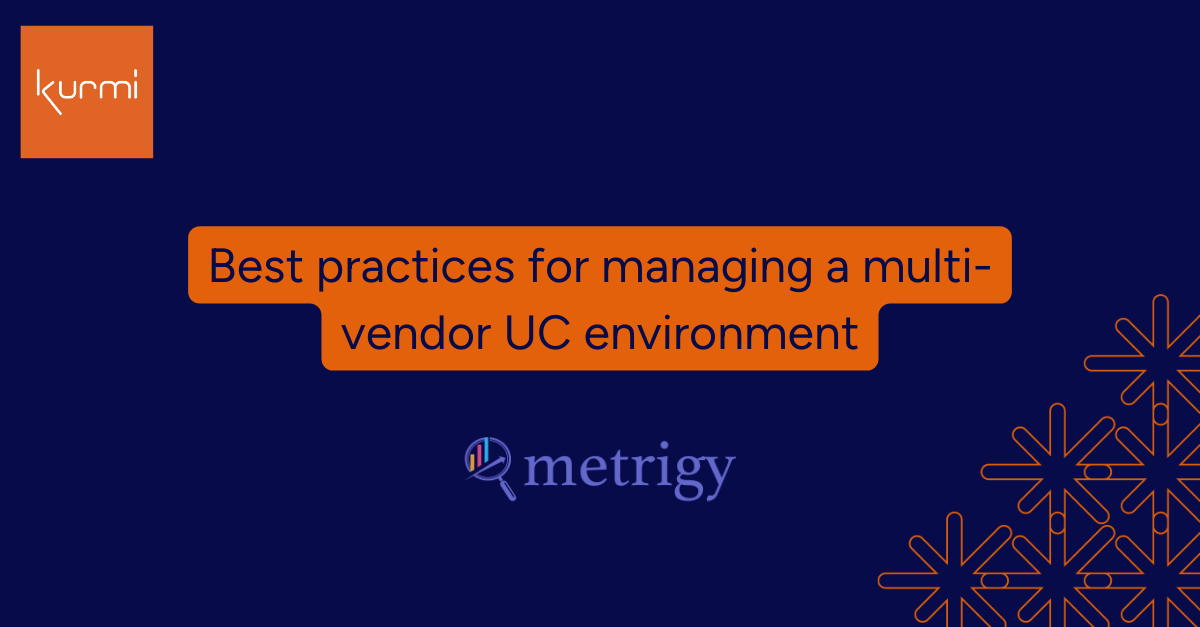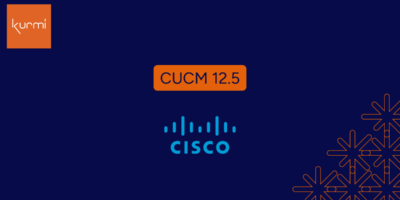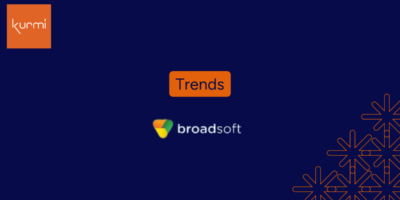Spinning multiple plates is an impressive task. But unless you’re a trained expert, it can end in tears and broken china.
It’s the same for today’s Unified Communications environments, where multiple disparate systems require certain levels of training and expertise to manage them properly. This level of attention can introduce the risk of errors and mismanagement as staff come and go or IT teams focus shifts to other priorities and projects.
To discuss the state of the multi-vendor environment and how to overcome the challenges that it creates, Kurmi’s CEO, Micah Singer recently sat down with Irwin Lazar, Metrigy President and Principal Analyst, for a webinar: “Best Practices for Managing a Multi-Vendor UC Environment.”
Addressing the current multi-vendor environment and its challenges
The complexity of the modern UC environment has only increased over the last decade, accelerating especially rapidly since 2019, Irwin explained. Three of the main changes have been the number of vendors that enterprises use, the growth and prominence of multi-vendor environments, and the shift away from voice-centric, single-vendor tech stacks toward ecosystems deploying messaging, meeting apps, and collaboration tools.
As Irwin highlighted, when you look at the breakdown of UC providers deployed at enterprises today, the landscape is quite complex—and it’s a trend that’s growing. One-third of companies are using on-premises solutions, while another third are using subscription-based cloud services. What stands out from this is that 16% of the on-premises group also use a UCaaS provider, and a further 14% plan to start using one in 2023. What’s more, 61% of the cloud-based UCaaS users have multiple providers for their solutions, and only 39% plan on consolidating.
Shedding light on why so many organizations operate multi-vendor, mixed environments Micah commented, “There’s a real incentive for organizations to use what they find most useful and to seek out best-of-breed solutions. Equally, they may have taken on solutions through mergers and acquisitions. After all that, there’s still constant changing of systems – I think of it like ‘the infinity migration’ – which puts a lot of strain on IT organizations.”
These strains and challenges, according to Irwin, include the complexity of the environment, the inability to maintain a common policy for things like security and governance, and the lack of visibility into disparate systems.
Evaluating the solutions for success
During the conversation, Micah pressed the importance of looking at different management options available to enterprises in order to mitigate the challenges. These include using vendor-provided tools, using home-grown tools, or deploying third-party solutions like Kurmi’s. While vendor-provided and home-grown solutions have some merit, they’re not suitable for the highly complex, multi-vendor environment Metrigy is seeing. As Irwin noted, vendor-provided solutions lack flexibility and still require individual maintenance of their many component systems that provisioning teams or admins must switch between and synchronize.
Home-grown tools require high levels of in-house expertise for the different systems in play, and the ratio of time saved to the cost of development is very poor. Micah furthered this point saying, “For smaller businesses, home-grown tools can work. But when you scale up beyond, for example, one thousand digital workers, complexity is inevitable, and it only evolves and becomes worse as you add in new systems. Outsourcing to third-party admin tools is more sustainable, easier to use, and can standardize controls in a way that provides a clear return on companies’ investments.”
What to look for in a UC management solution
Rounding out the webinar, focus shifted to the merits of third-party provisioning tools and what organizations should look for. Both Irwin and Micah agreed that the top three features were 1) the ability to integrate with future vendor applications, 2) the ability to delegate provisioning to different employees and teams, and 3) the security of the data within the system.
Irwin and Micah went on to discuss the most commonly used primary UCaaS providers, the importance of ITSM integration and APIs, and a notable success case of a multinational banking organization using the Kurmi Provisioning Suite. To hear more of the data and dive deeper into the details, watch the full “Best Practices for Managing a Multi-Vendor UC Environment” webinar here.



